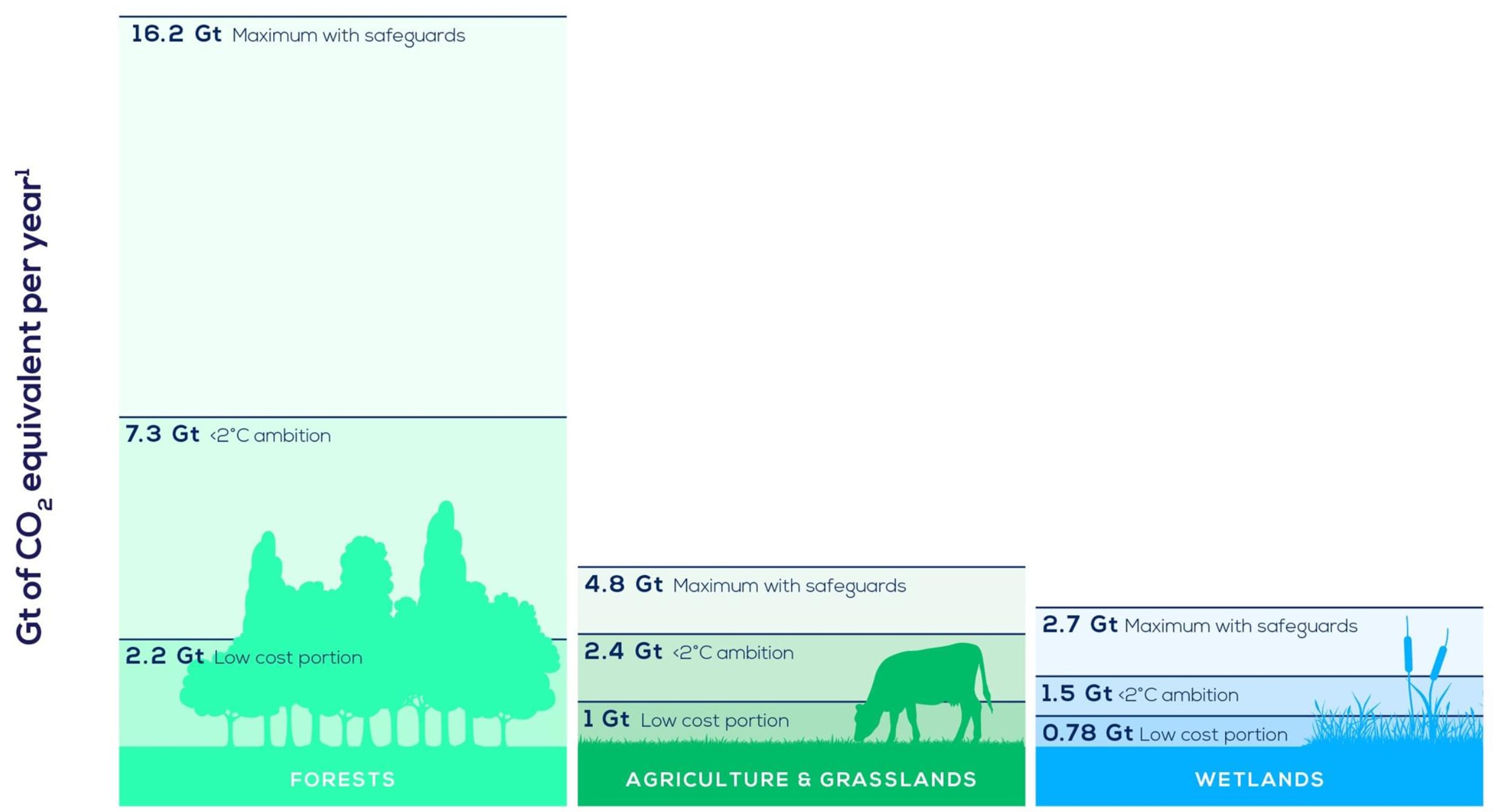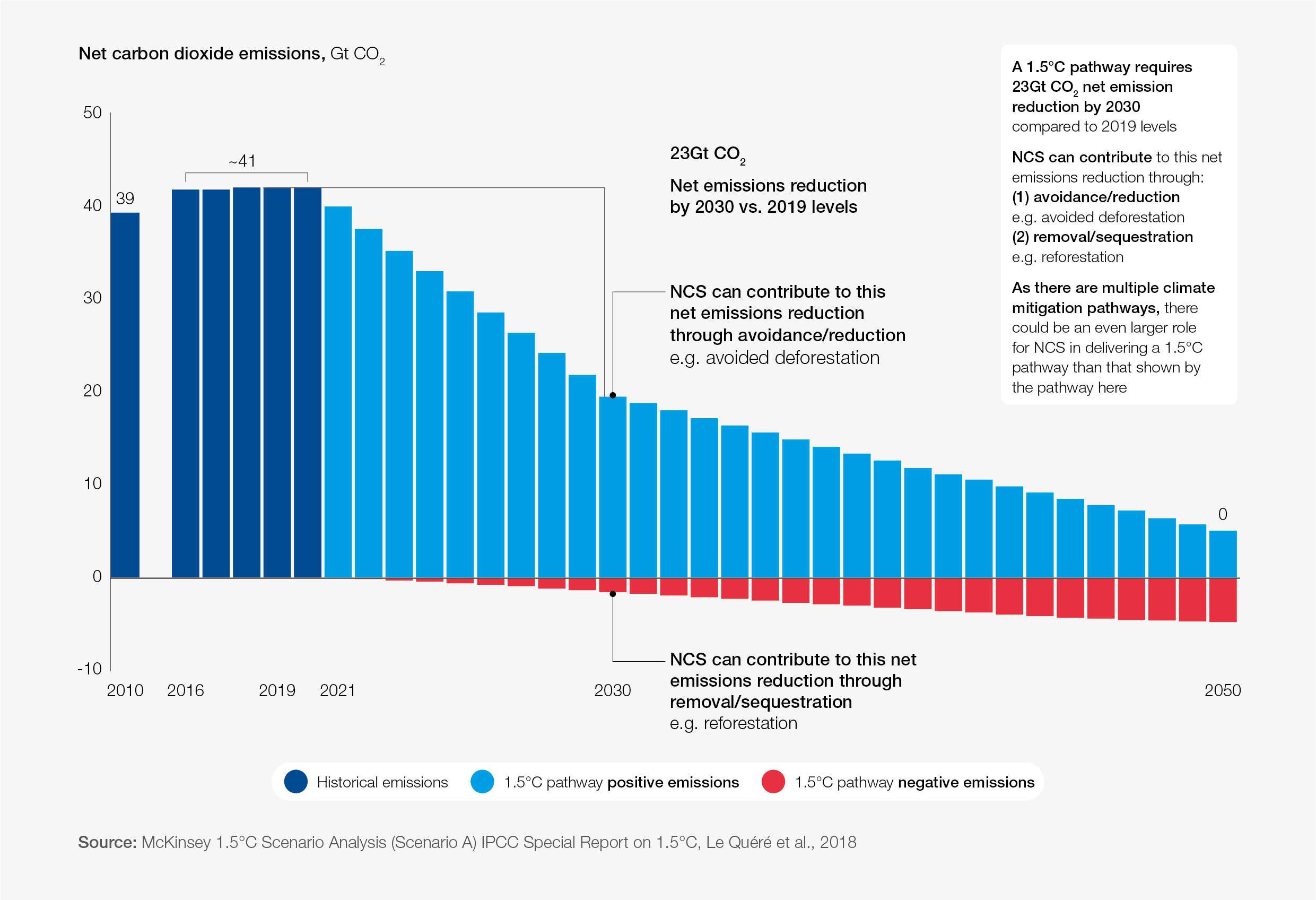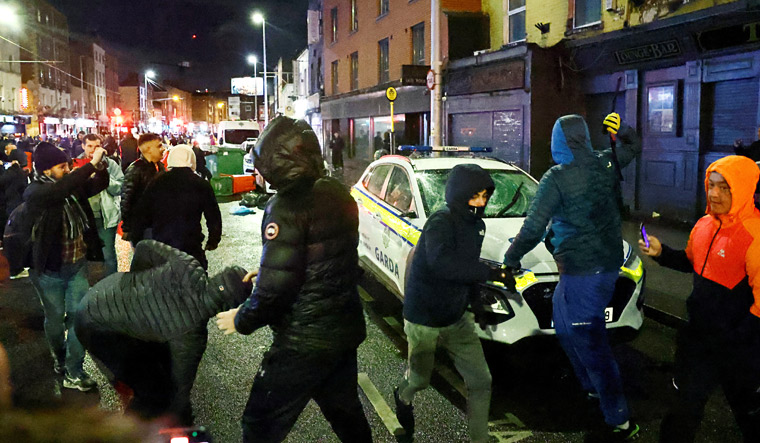PAKISTAN
Mountain villages fight for future as melting glaciers threaten floods

Tariq Jamil, 51, chair of the Community Based Disaster Risk Management Centre, walks with a hiking stick to check the ice on the Shisper glacier, near Hassanabad village, Hunza valley, in the Karakoram mountain range in the Gilgit-Baltistan region of Pakistan, on October 10 2023.
Image: REUTERS/Akhtar Soomro
24 November 2023 - BY CHARLOTTE GREENFIELD
On the steep slope of a glacier jutting through the Hunza valley in Pakistan's mountainous far north, Tariq Jamil measures the ice's movement and snaps photos. Later, he creates a report that includes data from sensors and another camera installed near the Shisper glacier to update his village an hour's hike downstream.
The 51-year-old's mission: mobilise his community of 200 families in Hassanabad, in the Karakoram mountains, to fight for a future for their village and way of life, increasingly under threat from unstable lakes formed by melting glacier ice.
When glacial lakes overfill or their banks become unsound, they burst, sparking deadly floods that wash out bridges and buildings and wipe out fertile land throughout the Hindu Kush, Karakoram, and Himalayan mountain ranges that intersect in northern Pakistan.
Himalayan glaciers are on track to lose up to 75% of their ice by the century's end due to global warming, according to the International Centre for Integrated Mountain Development (ICIMOD).
After all the sensors are installed, village representatives will be able to monitor data through their mobiles, Jamil said. “Local wisdom is very important: we are the main observers. We have witnessed many things.”
Hassanabad is part of the UN-backed Glacial Lake Outburst Flood (GLOF) II project to help communities downstream of melting glaciers adapt.
Amid a shortfall in funding for those most vulnerable to the impacts of climate change, village residents say they urgently need increased support to adapt to threats of glacial lake floods.
“The needs are enormous,” said Karma Lodey Rapten, Regional Technical Specialist for Climate Change Adaptation at the United Nations Development Program (UNDP).
Pakistan is the only country to receive adaptation funding from the Green Climate Fund — the Paris Agreement's key financing pot — to ease the risk of such floods.
While countries like Bhutan have worked with other funders to minimise the threat from glacial lake floods, the $36.96m (R697.94m) GLOF II scheme — which ends in early 2025 — is a global benchmark for other regions grappling with this threat, including the Peruvian Andes and China.
Since 2017, weather stations as well as sensors measuring rainfall, water discharge, and river and lake water levels have been installed under the administration of Islamabad and UNDP. GLOF II has deployed speakers in villages to communicate warnings, and infrastructure like stone-and-wire barriers that slow floodwater.
In Hassanabad, a villager regularly monitors the feed from a camera installed high up the valley for water levels in the river by the glacier's base during risky periods such as summer, when a lake dammed by ice from Shisper glacier often forms.
Pakistan is among the world's most at-risk countries from glacial lake floods, with 800,000 people living within 15km of a glacier. Many residents of the Karakorams built their homes on lush land along rivers running off glaciers.
In neighbouring India in October, floods probably triggered by a partial glacial lake burst in the Himalayas, following an avalanche and heavy rains, likely killed 179 people. Many remain missing. An early warning system was being installed near the lake, but it had not been completed.
DEADLY RISKS
As many as 15-million people worldwide are at risk of glacial lake flooding, with 2-million of them in Pakistan, according to a February study published in scientific journal Nature Communications.
From 2018 to 2021, about 14 GLOFs occurred in Pakistan, but that spiked to 75 in 2022, according to UNDP.
Jamil's village had close calls from floods, according to residents and officials. Over the past three years, residents repeatedly evacuated just in time to avoid loss of life, and many fear a flood while they sleep. Others struggle financially as their land and homes were destroyed, most recently in 2022.
In Chalt village, a few hours away, a torrent of black water rushed down the valley last year. Zahra Ramzan's 11-year-old son Ali Mohammad was swept away.
“I'm in very deep grief. I could not see my son again, even a body,” said the 40-year-old.
The village has had little information about the risks, residents said. Ramzan gets nervous whenever there is heavy rain or flooding, refusing to allow her surviving children out of sight.
In Hassanabad, Jamil is trying to manage these risks. He and 23 other volunteers have trained in first aid and evacuation planning. They monitor the glacier and consult with outside experts and officials each summer.
They are hoping to receive international financing for 20 times the length of barrier wall than is currently funded. They also want interest-free loans to rebuild destroyed homes and adapt their housing with stronger material, as well as better mobile reception to access the monitoring feed.
PLEA FOR ADAPTATION FUNDING
With the UN's COP28 climate summit scheduled to begin on November 30, pressure is ramping up on wealthy countries to fulfil promises to help developing nations.
The Green Climate Fund said in October it had raised $9.3bn (R175.62bn), short of its $10bn (R188.84bn) target.
Wealthy nations are set to meet a broader $100bn (R1.89-trillion) climate finance pledge to developing countries this year, three years late and short of the actual needs, estimated by the UN at over $200bn (R3.78-trilion) annually by 2030.
ICIMOD said changes driven by global warming to glaciers in the Hindu Kush Himalayan region are “largely irreversible.” The region has over 200 glacial lakes considered dangerous.
Darkut village, also part of GLOF II, sits surrounded by mountains and glaciers above verdant plains where yaks graze. At the bottom of nearby Darkut Glacier lies a deep turquoise lake.
“Until 1978 ... this whole place was a glacier, the pool of water came later,” said 75-year-old Musafir Khan, pointing at the lake that formed as the glacier receded.
Unlike the ice-dammed lake at Shisper, Darkut is formed in the soil and rock landscape left by a receding glacier.
In northern Pakistan, such moraine-dammed lakes are linked to comparatively few GLOFs, according to ICIMOD researcher Sher Muhammad, but in other parts of mountainous Asia they have been associated with higher casualty rates than ice-dammed lakes.
The risks of both types of lakes may increase, Muhammad said.
Muhammad Yasin, an environmental sciences graduate researcher at Karakorum International University, is studying the extent to which Darkut glacier is melting.
“We have [told] the community that risk factors exist in this lake, you should be aware of this,” he said.
Many families have left over the years after previous flash floods, said Khan, who was born in the remote village, but hundreds rebuilt nearby.
In Hassanabad, the prospect of moving also fills many with disbelief. Their families have lived off orchard fields surrounded by soaring mountains for 400 years, growing produce and grazing livestock high in the plains. Many say they have no resources to move from the village, where their ancestors are buried.
“If the flood will cut us off, we will miss the nature of this village, our neighbours and relatives,” said Tehzeeb, Jamil's 15-year-old daughter.
“Like a bird in a cage,” Jamil said of moving to a city. He was open to exploring the option, but said he would focus on keeping the village alive.
“It's my responsibility to prevent the community from (facing) any disaster.”







 Image: Bluegain (2023)
Image: Bluegain (2023)


 Protesters vandalise a police vehicle before setting it on fire during a demonstration following a suspected stabbing that left few children injured in Dublin, Ireland | Reuters
Protesters vandalise a police vehicle before setting it on fire during a demonstration following a suspected stabbing that left few children injured in Dublin, Ireland | Reuters




:quality(70)/cloudfront-eu-central-1.images.arcpublishing.com/thenational/IALW73IQ6ZC2PFLMYEVFHDXGW4.jpeg)
:quality(70)/cloudfront-eu-central-1.images.arcpublishing.com/thenational/ZPK7HH6TNNX4WDEIKKVSP7UGUY.jpg)
:quality(70)/cloudfront-eu-central-1.images.arcpublishing.com/thenational/QUYUDBQTW66NWI27OPY2RELFHI.jpg)
:quality(70)/cloudfront-eu-central-1.images.arcpublishing.com/thenational/UEOBWX5EK5PDRFQ7UAXZI6UUZA.jpg)
:quality(70)/cloudfront-eu-central-1.images.arcpublishing.com/thenational/AIMLWMB7JXDGIR7EPKGS473BRQ.jpg)
:quality(70)/cloudfront-eu-central-1.images.arcpublishing.com/thenational/TY7EAIZZIIBZZXA5V3PWFMBJRE.jpg)
:quality(70)/cloudfront-eu-central-1.images.arcpublishing.com/thenational/ZQBUJU72LT5DAHMMXH4MZKSSXA.jpg)
:quality(70)/cloudfront-eu-central-1.images.arcpublishing.com/thenational/V7WPFBNZHQVMV5VADCNMKZ7IF4.jpg)
:quality(70)/cloudfront-eu-central-1.images.arcpublishing.com/thenational/AZYNEPZFZORKF2B5I3DZFBZIS4.jpg)
:quality(70)/cloudfront-eu-central-1.images.arcpublishing.com/thenational/GE6GJCBVOYBT6O6KS2HCDDIHFE.jpg)
:quality(70)/cloudfront-eu-central-1.images.arcpublishing.com/thenational/NVO2UB5JYX44T3H7ZCXXQMEPS4.jpg)
:quality(70)/cloudfront-eu-central-1.images.arcpublishing.com/thenational/L6XRAN7DUWETWEJ6PYUXSX4RQE.jpg)
:quality(70)/cloudfront-eu-central-1.images.arcpublishing.com/thenational/I4UPPO35DQRAWOKFNL5B5PCJII.jpg)
:quality(70)/cloudfront-eu-central-1.images.arcpublishing.com/thenational/TU2T6DCQN7KGU2UVWBAGCM5FP4.jpg)
:quality(70)/cloudfront-eu-central-1.images.arcpublishing.com/thenational/S7KUF3GHD2V5RI7DRVYFP7SNBU.jpg)
:quality(70)/cloudfront-eu-central-1.images.arcpublishing.com/thenational/VYSS3XHJXEPXKS4JJ3IQODMG7Y.jpg)
:quality(70)/cloudfront-eu-central-1.images.arcpublishing.com/thenational/6PBMUAQXNJFYFU3P3LZP2JNBYI.jpg)
:quality(70)/cloudfront-eu-central-1.images.arcpublishing.com/thenational/P3CNWAAJ7YQ7JK4U4BNS6AWSNA.jpg)
:quality(70)/cloudfront-eu-central-1.images.arcpublishing.com/thenational/IP3JYKQQTS2ISP4MANTAWYHVHE.jpg)
:quality(70)/cloudfront-eu-central-1.images.arcpublishing.com/thenational/ICUY7455RWZXFDLJ7GTD2FYBKQ.jpg)
:quality(70)/cloudfront-eu-central-1.images.arcpublishing.com/thenational/F5PEKTGY2RFMRRZWPC6WDUGUPM.jpg)
:quality(70)/cloudfront-eu-central-1.images.arcpublishing.com/thenational/IGKAM6QX5Q2IVI2OKLNYKJ27NE.jpg)
:quality(70)/cloudfront-eu-central-1.images.arcpublishing.com/thenational/O7ODAG5GYREQLHK7P3XZEZSJ5Y.jpg)
:quality(70)/cloudfront-eu-central-1.images.arcpublishing.com/thenational/PLBNJPEC4HOEEMZ5TPEXSKML3A.jpg)
:quality(70)/cloudfront-eu-central-1.images.arcpublishing.com/thenational/Y6QAGXUNUNOCJROA3CU2OG4RDQ.jpg)
:quality(70)/cloudfront-eu-central-1.images.arcpublishing.com/thenational/BJA7SIGMU6QRF5EVBPGPJHPTLE.jpg)
:quality(70)/cloudfront-eu-central-1.images.arcpublishing.com/thenational/AVSRYCCMT2Q3WTZKQABIBSHYLM.jpg)
:quality(70)/cloudfront-eu-central-1.images.arcpublishing.com/thenational/RJFXTKS74SJZCPTTOD7P7CZOIA.jpg)
:quality(70)/cloudfront-eu-central-1.images.arcpublishing.com/thenational/DWKOPZC4BBGNSST6YIFSBPVAUE.jpg)